Hello & a belated Happy New Year to all of you! Since I missed putting out a December post, I’ll take this moment to say I sure hope everyone had a pleasant Christmas & New Year holiday.
I hope you are all enjoying the winter season thus far. It’s been a chilly one up here until this week. We, like the rest of Ontario, are enjoying a ‘January Thaw’ & we actually had some light rain showers this afternoon. I’m really hoping that won’t continue as the deep freeze will likely return next week sometime.
It’s turning out to be a fairly quiet winter in my backyard. I have steady activity from about a dozen different bird species but numbers of individuals are significantly lower than I’ve had in recent winters. The most notable absentees are Evening Grosbeaks & Common Redpolls. I have both species at the feeders daily right now but nowhere near the numbers I’m used to. In a really good year, I’ll see 50+ Evening Grosbeaks and 120+ Redpolls at a time. In an average year, I’ll see 30+ EVGBs & 50+ COREs. This year? I’m lucky to see a dozen EVGBs & 20 COREs. So, they are here but most of them have gone elsewhere for this season.
Just this week, I finally spotted the season’s first Hoary Redpoll on my nyjer feeder. In my best year ever, I had 20 Hoary Redpolls in my yard … it was amazing! Normally, I’ll see about 5 in a winter.
Numbers of Pine Grosbeaks are also a little below average this year. I’m seeing about 15 to 20 at a time where I would normally have at least 25 to 30.
One little treat this winter has been sightings of a couple of leucistic Pine Grosbeaks. Leucism is a lack of pigment or color in some feathers. The beautiful female Pine Grosbeak on the left in the photo below is a prime example. Notice how she has so much more white in her feathers compared to the other birds. She was stunning!
This next photo, I find, is quite interesting. It shows a leucistic male Pine Grosbeak but also shows how color is variable in the same species. The middle male is more orange-ish while the one on the right is the standard rosy red.
Aside from the disappointment of lower-than-average numbers, I’ve been having great fun watching the Crows & Ravens this winter. It used to be that we would never see Crows in winter … they would all migrate south. That has changed in the past 10 years, however, and now it is common to see them all year round.
This winter, I have a crippled Crow visiting my yard almost daily. I noticed in late November that one Crow had a lame leg (see the Crow on the left). The right leg was hanging & totally useless to the bird. As the winter has gone on, the leg is now ‘petrified’: stiff. The Crow cannot close the talons or bear weight on the foot at all. It has managed quite well all winter, coming to the feeders daily & drinking from the bird bath. The other Crow is near it most times so I’m assuming they are a mated pair.
Ravens have been great fun as well. I even learned something about them recently: the Raven below is a ‘yearling’ or ‘hatch-year’ bird, just hatched last spring. How can I tell? Someone pointed out to me that the interior of a yearling Raven’s mouth is red! When this bird is a full adult, its mouth interior will be solid black. Interesting! And this bird had great fun trying to fly away with an entire chunk of suet. It would drop the suet just out of the webcam’s view, then sit on the ground to eat it.
I have a small flock of European Starlings visiting this winter. It’s always hit or miss with blackbirds in the winter. Sometimes I’ll have one or two Grackles spend a winter, this year it’s 8 Starlings. I don’t mind them in lower numbers like this. They are beautiful to look & very cool to listen to with their large assortment of whistles, clicks, etc.
Canada’s new (likely!) national bird has been spending some time at my feeders this winter. Three Gray Jays have been coming around a few times per week. Two of the them are a mated pair (I saw them feeding each other in my trees 2 days ago!) and the third one is probably their offspring from last season. It will likely be sent packing shortly (if it hasn’t already), before this year’s nesting season begins.
I have 6 to 10 Blue Jays that come around daily for their peanuts. They have me well trained so that the platform feeder is loaded with peanuts in the shell for them every morning! Lately, I’ve been hearing the ‘Blue Jay Rattle’ around the yard again. I believe this call is only made by the female and it’s something to do with courtship.
I believe I have three Ruffed Grouse coming to the yard but I never see them at the same time. This webcam snapshot below is one of the rare times this winter that I’ve seen two together. One Grouse is noticeably smaller & appears to be the only one that tolerates the Blue Jays. The larger Grouse (males, I believe) do NOT tolerate the Jays & send them packing immediately!
After an entire year of virtually NO woodpecker sightings (Hairy & Downy, anyway), a few are finally finding my yard. A little female Downy Woodpecker has been around most of this winter. The Hairy Woodpecker visits have been much more sporadic …. few & far between. An exciting thing to note though: I finally had a PAIR of Hairy Woodpeckers (a male & a female) chasing each other through my yard today! 🙂
This little female Downy has been alone in the yard most of the time but I did recently see a male Downy in my birch tree.
Okay, I guess I’ve rattled on plenty long enough! This gives you an idea of how my winter feeding season is going anyway. Before I go, here is the link to the Project FeederWatch webcam in my yard. It will run until mid April for the FeederWatch season.
I hope you’ve enjoyed the read & the photos. Until next time, thanks for taking a look!



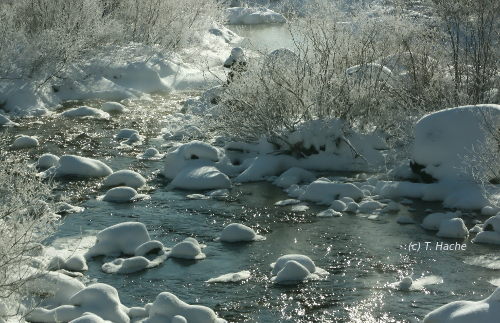
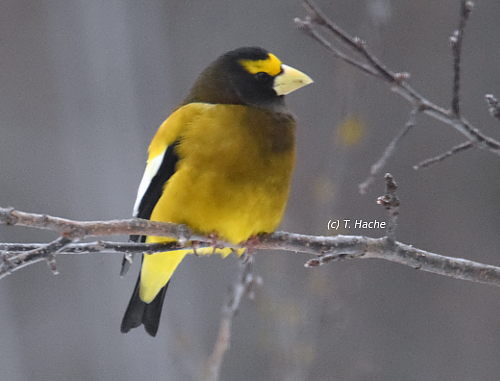
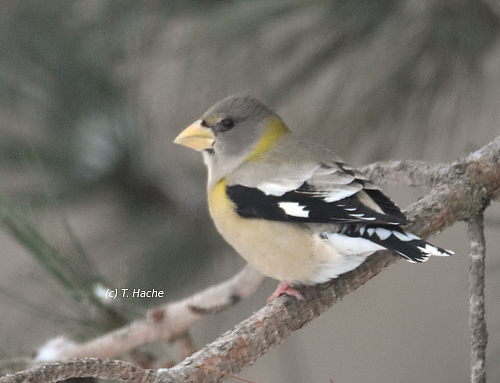
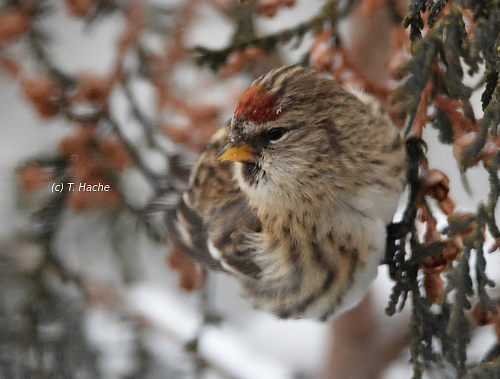

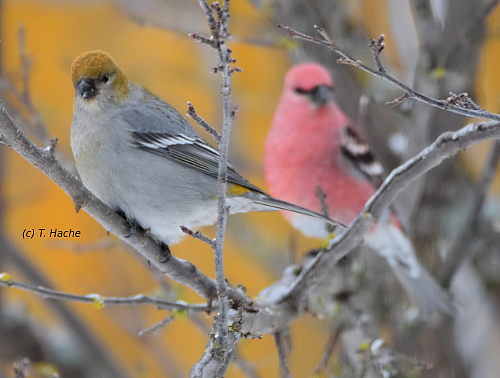
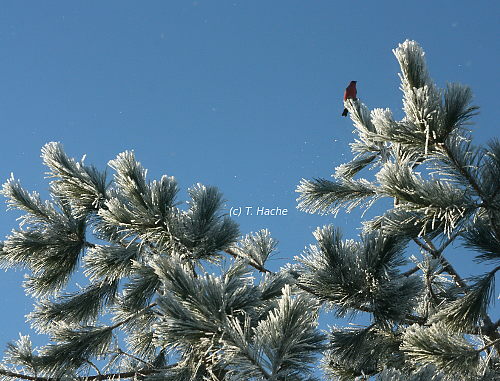

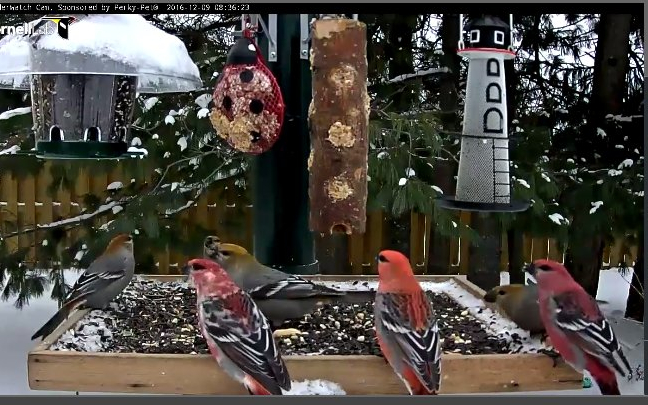
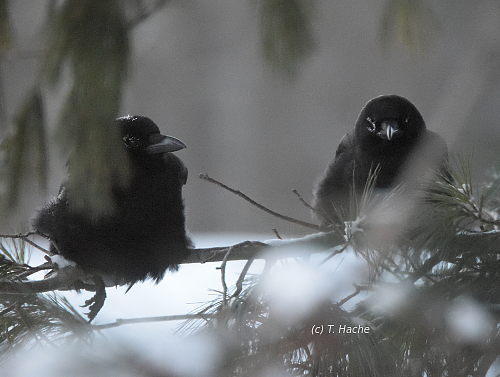
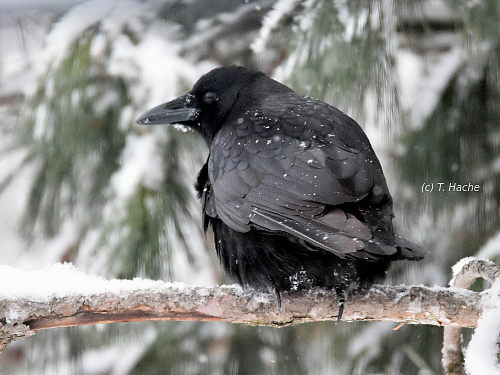
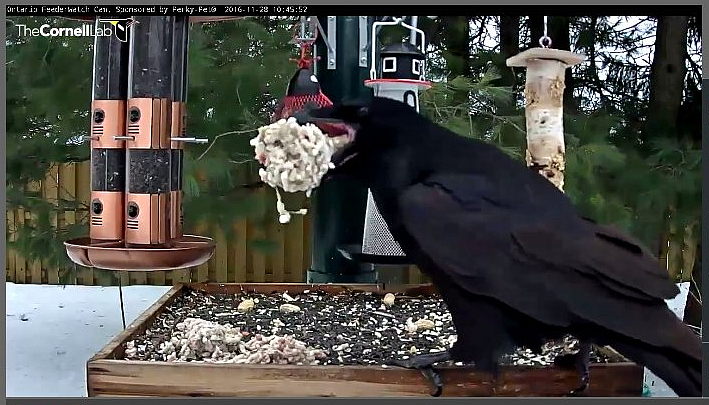
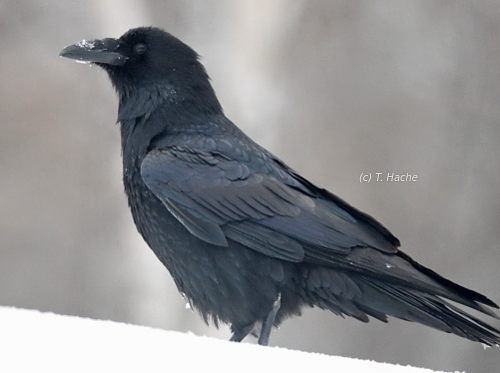

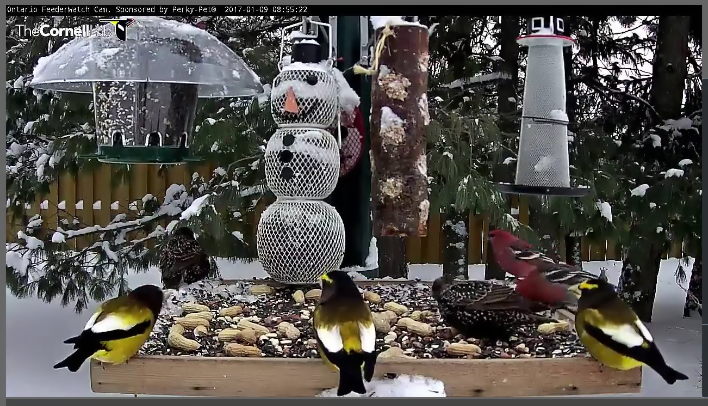
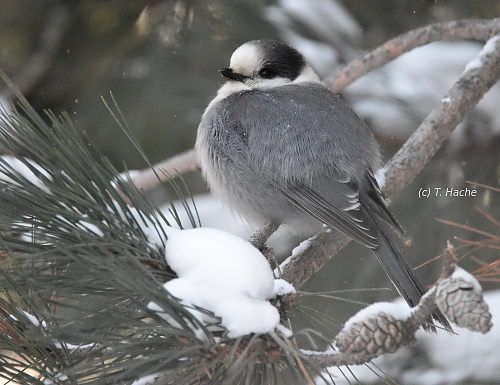
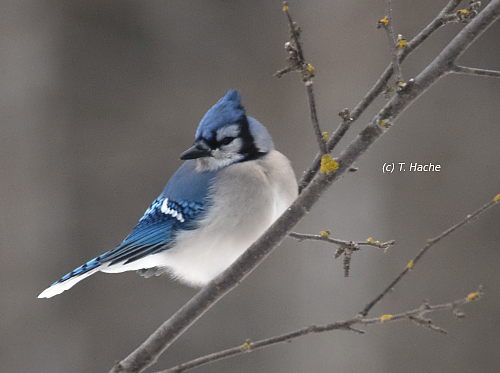
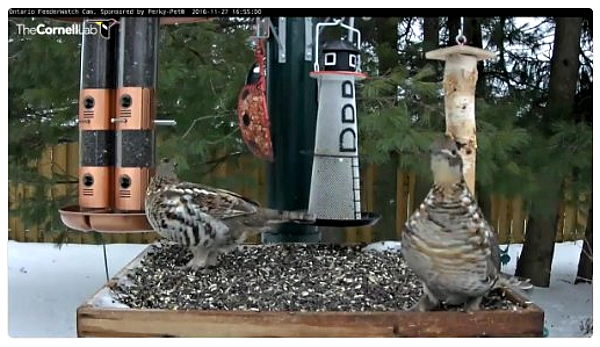
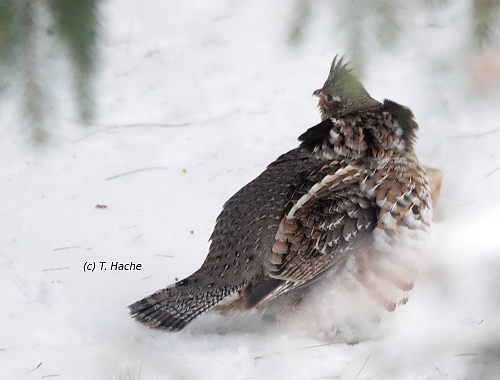
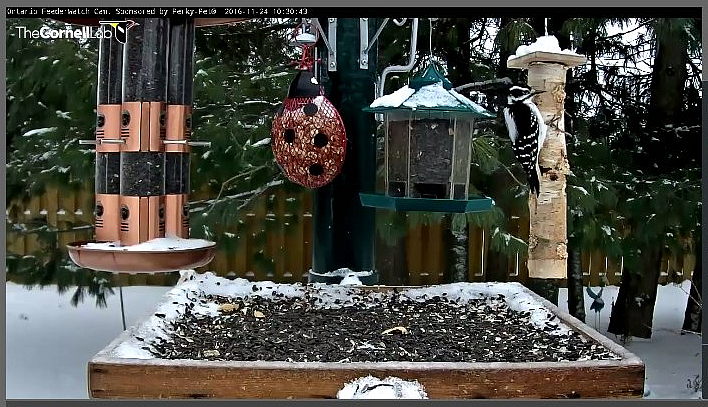
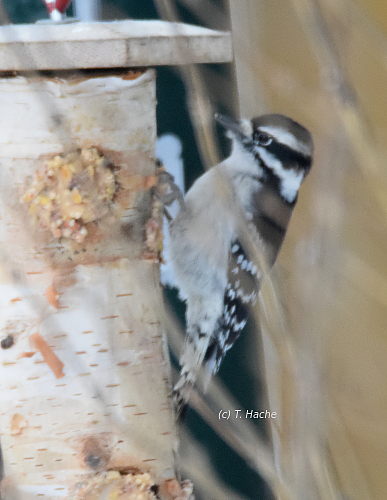
Thanks, Lee!
Thank you, Bev 🙂
Thanks, Erin!
..loving your pics and the info on the yearling Raven is a bonus!!
Thankyou so much for sharing. We are having lower numbers of every bird species as well, here in West St Paul, M B near Wpg. I find your pictures very enjoyable.
Bev
It’s hard to believe we live in the same province – the species at our feeders are so different! It’s great to see all your pics and comments in one spot.
Glad you enjoyed it, Marlene!
Thanks so much, Rosie! I love hearing from teachers who share the webcam with their students! 🙂 I’m not sure how much the weather is playing a hand in the lower numbers this year. Food is always the #1 reason for year over year differences. We likely have a shortage of the Evening Grosbeak’s favourite food (Spruce Budworm) so they have gone elsewhere in search of it. I’m just glad I still have some of them here. 🙂
Glad you enjoyed it, Jane. 🙂
Thanks for the kind words, Reba!
Made my day. We are so fortunate to have you share so many more backyard birds than at our feeders around the corner. Ongoing thanks. Marlene Ruby Turner
P.S. My students (8th graders) will often ask if I can put the Ontario feeder cam on while they’re working!
I noticed the smaller numbers you mentioned. Could it be that the weather is not as harsh as usual?
Interesting about the juvenile raven. I loved seeing him/her, and my students at school were impressed!
Thank you for these pictures and information!
GREAT read & BEAUTIFUL pics as always, Tammie..thank YOU! 😊
Wonderful pictures and great commentary. Thanks for all your birding work.